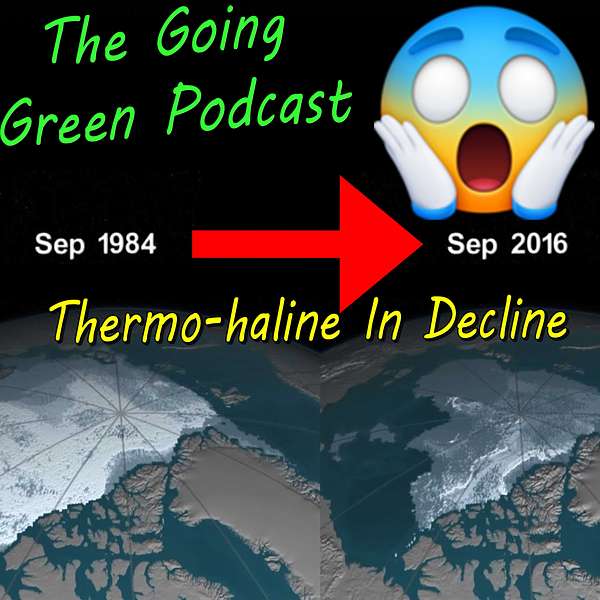
Going Green
Going Green
The Thermo-haline is in Decline 😱
The thermohaline circulation, also known as the "global ocean conveyor belt," is a system of ocean currents that transport heat, salt, and nutrients around the world. It plays a crucial role in regulating the Earth's climate by redistributing heat and maintaining the temperature balance between the tropics and the polar regions.
The Beaufort Gyre, a major Arctic Ocean current, has been storing vast amounts of ice and cold freshwater due to increased Arctic sea ice melt. If this gyre were to release its stored freshwater into the Atlantic Ocean, it could have substantial impacts on the thermohaline circulation and, consequently, on the climate of northern Europe.
Here are some potential impacts:
Cooling Effect: The most immediate effect would likely be a significant cooling of northern Europe. The thermohaline circulation brings warm surface water from the tropics to the North Atlantic, which moderates the climate of northern Europe. A large influx of cold freshwater from the Beaufort Gyre could disrupt this heat transport, leading to cooler temperatures.
Weather Patterns: The change in ocean temperatures could also influence atmospheric pressure systems, potentially altering prevailing wind patterns and storm tracks. This could lead to changes in weather patterns, with the potential for increased storminess or precipitation in some areas.
Sea Level Rise: The influx of freshwater could also contribute to sea level rise, especially in the North Atlantic region. This could increase the risk of coastal flooding and erosion.
Biodiversity and Fisheries: Changes in ocean temperature and salinity could have impacts on marine ecosystems, including changes in species distributions and productivity. This could have implications for fisheries, which are important for many coastal communities in northern Europe.
Ocean Acidification and Deoxygenation: The disruption of ocean circulation could potentially exacerbate ocean acidification and deoxygenation, both of which are major threats to marine life.
It's important to note that the precise outcomes are hard to predict and would depend on a range of factors, including the amount of freshwater released, the rate of release, and how the Earth's climate system responds. Moreover, these effects would likely interact with other impacts of climate change, such as increasing temperatures and changing precipitation patterns. The potential disruption of the thermohaline circulation is one of the many reasons why it's so important to mitigate climate change by reducing greenhouse gas emissions.